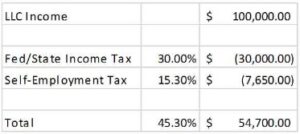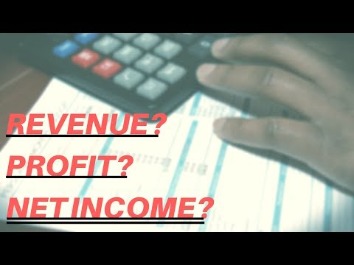
The balance sheet consists of assets, liabilities, and owners’ equity, revealing what the the notion of accounts payable and the method of work with them company owns, what it owes, and the equity owned by shareholders. By comprehending both income before taxes and tax expenses, you can gain a clear understanding of a company’s financial performance and its tax obligations. Remember to consistently monitor changes in tax regulations, as they may impact your analysis in the future. Net income or net profit, on the other hand, is the bottom line of the income statement that considers all revenues and expenses, including financial, operating, and tax expenses. It is essential to understand the difference between operating income and net income to assess how effectively the company is managing its resources and whether it can generate sustainable profitability. Sure, a glance at your income statement may tell you how much you’ve spent in a certain period of time, and how much your business has made.
Part 4: Getting Your Retirement Ready
Contents
When you calculate profit margins, you distill information from your income statement into percentages. A profit margin shows you the relationship between how much you spend, and how much you make, so you get a bird’s-eye-view of your company’s financial performance. Lenders and investors look at your profit margins to see how profitable your company is, and decide whether to give you money. Creditors are often more concerned about a company’s future cash flows than its past profitability.
Understanding the Role of Depreciation and Amortization
These include dividend income, and proceeds from sale of extraordinary items. However, it uses multiple equations to determine the net profit of the company. If you subtract all the outgoings from the money the company received, you are left with what are assets and liabilities $21,350.
Format historical data input using a specific format in order to be able to differentiate between hard-coded data and calculated data. As a reminder, a common method of formatting such data is to color any hard-coded input in blue while coloring calculated data or linking data in black. The statement is divided into time periods that logically follow the company’s operations. The most common periodic division is monthly (for internal reporting), although certain companies may use a thirteen-period cycle.
How to Read & Understand an Income Statement
In an income statement, this figure is typically displayed at the top section – ensuring it is one of the first things to be noticed. Use one of our templates to list the sales, expenses, and other gains or losses in the correct format. In both income statement formats, revenues are always presented before expenses. Creditors, on the other hand, aren’t as concerned about profitability as investors are. Creditors are more concerned with a company’s cash flow and if they are generating enough income to pay back their loans. External users like investors and creditors, on the other hand, are people outside of the company who have no source of financial information about the company except published reports.
- Ask a question about your financial situation providing as much detail as possible.
- Income statements, also called profit and loss or P&L statements, are one of the most important financial statements for tracking your company’s revenue and growth.
- Expenses are how much it costs for a business to keep running and make money.
- For lean startups still fine-tuning their technology and attracting venture capital, temporarily operating at a loss may not be a bad thing.
- For example, for future gross profit, it is better to forecast COGS and revenue and subtract them from each other, rather than to forecast future gross profit directly.
- Once the income before taxes is determined, the next step is to consider the tax expenses.
What Is the Difference Between Operating Revenue and Non-Operating Revenue?
Primary revenue and expenses offer insights into how well the company’s core business is performing. Secondary revenue and fees, on the other hand, account for the company’s involvement and expertise in managing ad hoc, non-core activities. Finally, using the drivers and assumptions prepared in the previous step, forecast future values for all the line items within the income statement. For example, for future gross profit, it is better to forecast COGS and revenue and subtract them from each other, rather than to forecast future gross profit directly.

Simply put, this is the money a are purchases treated as assets or expenses business or company earns by offering services or goods. For a manufacturing company, operating revenue will be the money earned on selling the final product. For a company offering subscription or consulting services, operating revenue will be the fees earned for services rendered.
Added these together with operating income arrives at a net income of $88.1 billion for Microsoft. Operating expenses are further expenses that are subtracted from total revenue. Microsoft spent $29.5 billion on research and development (R&D), over $24.4 billion on sales and marketing costs, and $7.6 billion on general and administrative costs. Total operating expenses are computed by summing all these figures ($74.1 billion + $29.5 billion + $24.4 billion + $7.6 billion) to arrive at $135.7 billion. Calculating tax expenses involves applying the current applicable tax rate to the income before taxes. Tax rates may vary depending on the company’s jurisdiction, size, and other factors.
